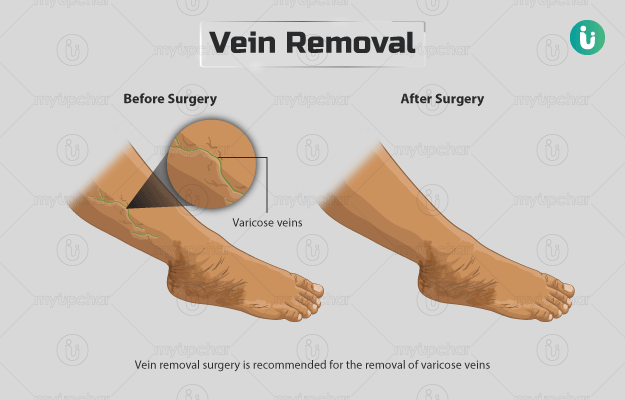Summary
Vein removal surgery is recommended for the removal of varicose veins. Veins are blood vessels that carry deoxygenated (without oxygen) blood from body tissues to the heart. They contain valves to prevent the backflow of blood. If these valves become weak or damaged, blood pools up in veins, resulting in enlargement or swelling of veins, a condition called varicose veins. Two surgeries are currently available for removing veins, namely, ambulatory phlebotomy and vein stripping surgery. The former surgery involves removing the affected vein with the help of a surgical hook, while the latter involves inserting a wire and removing the affected vein through it. You will be able to return home on the same day of the surgery for both. Vein removal surgery will help to reduce the symptoms of varicose veins and improve the appearance of the affected part of the body.






































